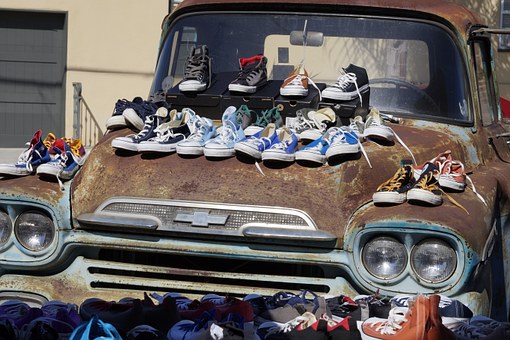Pyrolysis - China Automatic Bread Maker - Electric Blender

Occurrence and uses
Occurrence and usesFire
Pyrolysis is usually the first chemical reaction that occurs in the burning of many solid organic fuels, like wood, cloth, and paper, and also of some kinds of plastic. In a wood fire, the visible flames are not due to combustion of the wood itself, but rather of the gases released by its pyrolysis; whereas the flame-less burning of embers is the combustion of the solid residue (charcoal) left behind by it. Thus, the pyrolysis of common materials like wood, plastic, and clothing is extremely important for fire safety and fire-fighting.

Cooking
Pyrolysis occurs whenever food is exposed to high enough temperatures in a dry environment, such as roasting, baking, toasting, grilling, etc.. It is the chemical process responsible for the formation of the golden-brown crust in foods prepared by those methods.
In normal cooking, the main food components that suffer pyrolysis are carbohydrates (including sugars, starch, and fiber) and proteins. Pyrolysis of fats requires a much higher temperature, and since it produces toxic and flammable products (such as acrolein), it is generally avoided in normal cooking. It may occur, however, when barbecuing fatty meats over hot coals.
Even though cooking is normally carried out in air, the temperatures and environmental conditions are such that there is little or no combustion of the original substances or their decomposition products. In particular, the pyrolysis of proteins and carbohydrates begins at temperatures much lower than the ignition temperature of the solid residue, and the volatile subproducts are too diluted in air to ignite. (In flamb dishes, the flame is due mostly to combustion of the alcohol, while the crust is formed by pyrolysis as in baking.)
Pyrolysis of carbohydrates and proteins require temperatures substantially higher than 100C (212F), so pyrolysis does not occur as long as free water is present, e.g. in boiling food not even in a pressure cooker. When heated in the presence of water, carbohydrates and proteins suffer gradual hydrolysis rather than pyrolysis. Indeed, for most foods, pyrolysis is usually confined to the outer layers of food, and only begins after those layers have dried out.
Food pyrolysis temperatures are however lower than the boiling point of lipids, so pyrolysis occurs when frying in vegetable oil or suet, or basting meat in its own fat.
Pyrolysis also plays an essential role in the production of barley tea, coffee, and roasted nuts such as peanuts and almonds. As these consist mostly of dry materials, the process of pyrolysis is not limited to the outermost layers but extends throughout the materials. In all these cases, pyrolysis creates or releases many of the substances that contribute to the flavor, color, and biological properties of the final product. It may also destroy some substances that are toxic, unpleasant in taste, or those that may contribute to spoilage.
Controlled pyrolysis of sugars starting at 170C (338F) produces caramel, a beige to brown water-soluble product which is widely used in confectionery and (in the form of caramel coloring) as a coloring agent for soft drinks and other industrialized food products.
Solid residue from the pyrolysis of spilled and splattered food creates the brown-black encrustation often seen on cooking vessels, stove tops, and the interior surfaces of ovens.
Charcoal
Pyrolysis has been used since ancient times for turning wood into charcoal in an industrial scale. Besides wood, the process can also use sawdust and other wood waste products.
Charcoal is obtained by heating wood until its complete pyrolysis (carbonization), leaving only carbon and inorganic ash. In many parts of the world, charcoal is still produced semi-industrially, by burning a pile of wood that has been mostly covered with mud or bricks. The heat generated by burning part of the wood and the volatile byproducts pyrolyzes the rest of the pile. The limited supply of oxygen prevents the charcoal from burning too. A more modern alternative is to heat the wood in an airtight metal vessel, which is much less polluting and allows the volatile products to be condensed.
The original vascular structure of the wood and the pores created by escaping gases combine to produce a light and porous material. By starting with dense wood-like material, such as nutshells or peach stones, one obtains a form of charcoal with particularly fine pores (and hence a much larger pore surface area), called activated carbon, which is used as an adsorbent for a wide range of chemical substances.
Biochar
Residues of incomplete organic pyrolysis, e.g. from cooking fires, are thought to be the key component of the terra preta soils associated with ancient indigenous communities of the Amazon basin. Terra preta is much sought by local farmers for its superior fertility compared to the natural red soil of the region. Efforts are underway to recreate these soils through biochar, the solid residue of pyrolysis of various materials, mostly organic waste.
Biochar improves the soil texture and ecology, increasing its ability to retain fertilizers and release them slowly. It naturally contains many of the micronutrients needed by plants, such as selenium. It is also safer than other "natural" fertilizers such as manure or sewage since it has been disinfected at high temperature, and since it releases its nutrients at a slow rate, it greatly reduces the risk of water table contamination.
Biochar is also being considered for carbon sequestration, with the aim of mitigation of global warming.
Coke
Pyrolysis is used on a massive scale to turn coal into coke for metallurgy, especially steelmaking. Coke can also be produced from the solid residue left from petroleum refining.
Those starting materials typically contain hydrogen, nitrogen or oxygen atoms combined with carbon into molecules of medium to high molecular weight. The coke-making or "coking" process consists in heating the material in closed vessels to very high temperatures (up to 2,000C or 3,600F), so that those molecules are broken down into lighter volatile substances, which leave the vessel, and a porous but hard residue that is mostly carbon and inorganic ash. The amount of volatiles varies with the source material, but is typically 25-30% of it by weight.
Carbon fiber
Carbon fibers are filaments of carbon that can be used to make very strong yarns and textiles. Carbon fiber items are often produced by spinning and weaving the desired item from fibers of a suitable polymer, and then pyrolyzing the material at a high temperature (from 1,5003,000C or 2,7305,430F).
The first carbon fibres were made from rayon, but polyacrylonitrile has become the most common starting material.
For their first workable electric lamps, Joseph Wilson Swan and Thomas Edison used carbon filaments made by pyrolysis of cotton yarns and bamboo splinters, respectively.
Biofuel
Pyrolysis is the basis of several methods that are being developed for producing fuel from biomass, which may include either crops grown for the purpose or biological waste products from other industries.
Although synthetic diesel fuel cannot yet be produced directly by pyrolysis of organic materials, there is a way to produce similar liquid ("bio-oil") that can be used as a fuel, after the removal of valuable bio-chemicals that can be used as food additives or pharmaceuticals. Higher efficiency is achieved by the so-called flash pyrolysis where finely divided feedstock is quickly heated to between 350 and 500C (660 and 930F) for less than 2 seconds.
Fuel bio-oil resembling light crude oil can also be produced by hydrous pyrolysis from many kinds of feedstock, including waste from pig and turkey farming, by a process called thermal depolymerization (which may however include other reactions besides pyrolysis).
Plastic waste disposal
Anhydrous pyrolysis can also be used to produce liquid fuel similar to diesel from plastic waste.
Processes
In many industrial applications, the process is done under pressure and at operating temperatures above 430C (806F). For agricultural waste, for example, typical temperatures are 450 to 550C (840 to 1,000F).
Vacuum pyrolysis
In vacuum pyrolysis, organic material is heated in a vacuum in order to decrease boiling point and avoid adverse chemical reactions. It is used in organic chemistry as a synthetic tool. In flash vacuum thermolysis or FVT, the residence time of the substrate at the working temperature is limited as much as possible, again in order to minimize secondary reactions.
Processes for biomass pyrolysis
Since pyrolysis is endothermic, various methods have been proposed to provide heat to the reacting biomass particles:
Partial combustion of the biomass products through air injection. This results in poor-quality products.
Direct heat transfer with a hot gas, ideally product gas that is reheated and recycled. The problem is to provide enough heat with reasonable gas flow-rates.
Indirect heat transfer with exchange surfaces (wall, tubes). It is difficult to achieve good heat transfer on both sides of the heat exchange surface.
Direct heat transfer with circulating solids: Solids transfer heat between a burner and a pyrolysis reactor. This is an effective but complex technology.
For flash pyrolysis the biomass must be ground into fine particles and the insulating char layer that forms at the surface of the reacting particles must be continuously removed. The following technologies have been proposed for biomass pyrolysis:
Fixed beds were used for the traditional production of charcoal. Poor, slow heat transfer resulted in very low liquid yields.
Augers: This technology is adapted from a Lurgi process for coal gasification. Hot sand and biomass particles are fed at one end of a screw. The screw mixes the sand and biomass and conveys them along. It provides a good control of the biomass residence time. It does not dilute the pyrolysis products with a carrier or fluidizing gas. However, sand must be reheated in a separate vessel, and mechanical reliability is a concern. There is no large-scale commercial implementation.
Ablative processes: Biomass particles are moved at high speed against a hot metal surface. Ablation of any char forming at the particles surface maintains a high rate of heat transfer. This can be achieved by using a metal surface spinning at high speed within a bed of biomass particles, which may present mechanical reliability problems but prevents any dilution of the products. As an alternative, the particles may be suspended in a carrier gas and introduced at high speed through a cyclone whose wall is heated; the products are diluted with the carrier gas. A problem shared with all ablative processes is that scale-up is made difficult since the ratio of the wall surface to the reactor volume decreases as the reactor size is increased. There is no large-scale commercial implementation.
Rotating cone: Pre-heated hot sand and biomass particles are introduced into a rotating cone. Due to the rotation of the cone, the mixture of sand and biomass is transported across the cone surface by centrifugal force. Like other shallow transported-bed reactors relatively fine particles are required to obtain a good liquid yield. There is no large scale commercial implementation.
Fluidized beds: Biomass particles are introduced into a bed of hot sand fluidized by a gas, which is usually a recirculated product gas. High heat transfer rates from fluidized sand result in rapid heating of biomass particles. There is some ablation by attrition with the sand particles, but it is not as effective as in the ablative processes. Heat is usually provided by heat exchanger tubes through which hot combustion gas flows. There is some dilution of the products, which makes it more difficult to condense and then remove the bio-oil mist from the gas exiting the condensers. This process has been scaled up by companies such as Dynamotive and Agri-Therm. The main challenges are in improving the quality and consistency of the bio-oil.
Circulating fluidized beds: Biomass particles are introduced into a circulating fluidized bed of hot sand. Gas, sand and biomass particles move together, with the transport gas usually being a recirculated product gas, although it may also be a combustion gas. High heat transfer rates from sand ensure rapid heating of biomass particles and ablation is stronger than with regular fluidized beds. A fast separator separates the product gases and vapors from the sand and char particles. The sand particles are reheated in fluidized burner vessel and recycled to the reactor. Although this process can be easily scaled up, it is rather complex and the products are much diluted, which greatly complicates the recovery of the liquid products.
Industrial sources
domestic refuse: Pyrolysis is used as a form of thermal treatment to reduce waste volumes
sawdust and waste wood
There is also the possibility of integrating with other processes such as mechanical biological treatment and anaerobic digestion.
Industrial products
syngas (flammable mixture of carbon monoxide and hydrogen): can be produced in sufficient quantities to both provide the energy needed for pyrolysis and some excess production
solid char that can either be burned for energy or recycled as a fertilizer (biochar).
Fire protection
Destructive fires in buildings will often burn with limited oxygen supply, resulting in pyrolysis reactions. Thus, pyrolysis reaction mechanisms and the pyrolysis properties of materials are important in fire protection engineering for passive fire protection. Pyrolytic carbon is also important to fire investigators as a tool for discovering origin and cause of fires.
References
^ Burning of wood, InnoFireWood's website. Accessed on 2010-02-06.
^ Johannes Lehmann. "Biochar: the new frontier". http://www.css.cornell.edu/faculty/lehmann/biochar/Biochar_home.htm. Retrieved 2008-07-10.
^ Cundall, Peter (2007-10-27). "Fact Sheet: Pete's Patch". Gardening Australia (Australian Broadcasting Corporation). http://www.abc.net.au/gardening/stories/s2071694.htm. Retrieved 2008-07-10.
^ a b Horstman, Mark (2007-09-23). "Agrichar -- A solution to global warming?". ABC TV Science: Catalyst (Australian Broadcasting Corporation). http://www.abc.net.au/catalyst/stories/s2012892.htm. Retrieved 2008-07-10.
^ "Trial to reverse global warming". BBC News. http://news.bbc.co.uk/1/hi/england/7993034.stm. Retrieved 2009-04-21.
^ "The virtues of biochar: A new growth industry?". The Economist. 2009-08-27. http://www.economist.com/sciencetechnology/displaystory.cfm?story_id=14302001. Retrieved 2009-08-30.
^ Evans, G. "Liquid Transport Biofuels - Technology Status Report", "National Non-Food Crops Centre", 14-04-08. Retrieved on 2009-05-05.
^ a b "Pyrolysis and Other Thermal Processing". US DOE. Archived from the original on 2007-08-14. http://web.archive.org/web/20070814144750/http://www1.eere.energy.gov/biomass/pyrolysis.html.
^ Middleton, Marc (2005-02-06). "Local recycler ignites Euro fuel market". Waste Management & Environment (Waste Management & Environment Media Pty Ltd.). http://www.wme.com.au/categories/waste_managemt/feb6_05.php. Retrieved 2008-07-10.
^ Fang He, Weiming Yi and Xueyuan Bai, Investigation on caloric requirement of biomass pyrolysis using TGSC analyzer, Energy Conversion and Management, Volume 47, Issues 15-16, September 2006, Pages 2461-2469
^ Cedric Briens, Franco Berruti and Jan Piskorz, Biomass Valorization for Fuel and Chemicals Production A Review, IJCRE, vol. 6, R2, Available at: http://www.bepress.com/ijcre/vol6/R2/
^ PowerPoint-presentatie
^ "BTG Biomass Technology Group b.v.:: Technology:: Pyrolysis". Archived from the original on 2007-07-03. http://web.archive.org/web/20070703000320/http://www.btgworld.com/technologies/pyrolysis.html.
^ Marshall, A. T. & Morris, J. M. (2006) A Watery Solution and Sustainable Energy Parks, CIWM Journal, August p22-23
^ "Designer Fuels: The Next Fuel Generation" (PDF). Archived from the original on 2006-12-18. http://web.archive.org/web/20061218035002/http://www.geagroup.com/imperia/md/content/presse/2005.11.30_presentation_dr_plass_e.pdf.
See also
Pyrolyser
Pyrolytic coating
Cracking (chemistry)
Destructive distillation
Dry distillation
Gasification
Karrick process
Wood gas
Dextrin

External links
Look up pyrolysis in Wiktionary, the free dictionary.
Categories: Organic reactions | Chemical engineering | Chemical processes | Industrial processes | Oil shale technology | Biodegradable waste management | Waste treatment technology | Fire protection
by: gaga